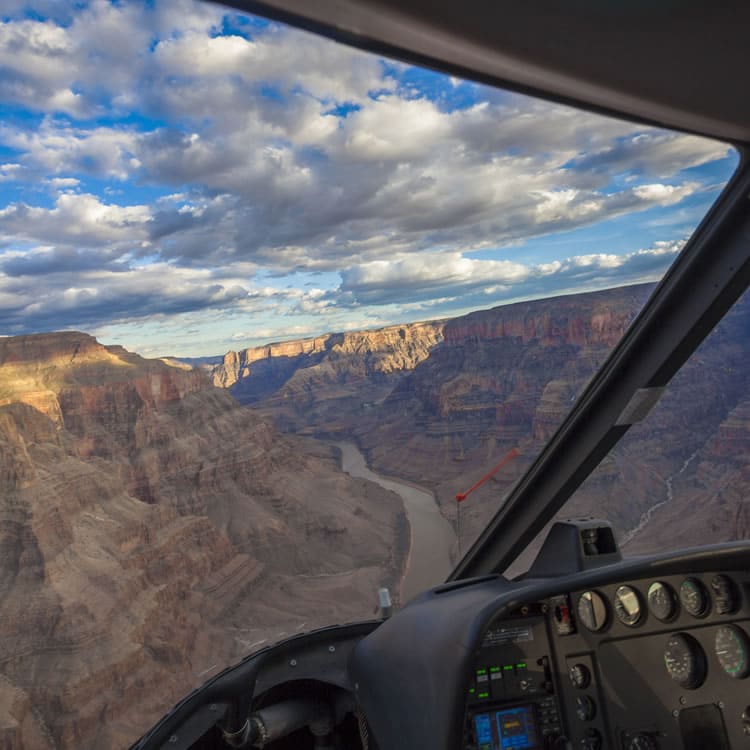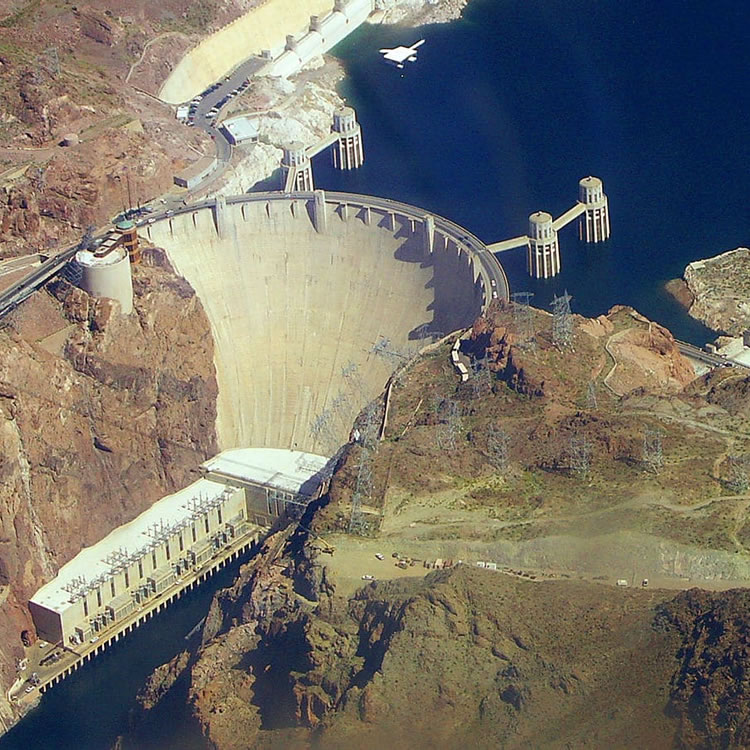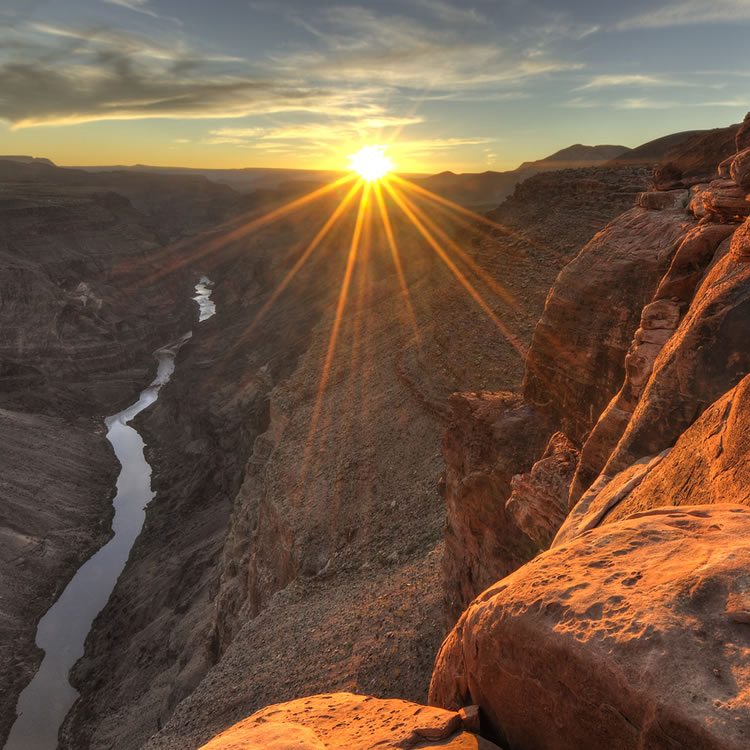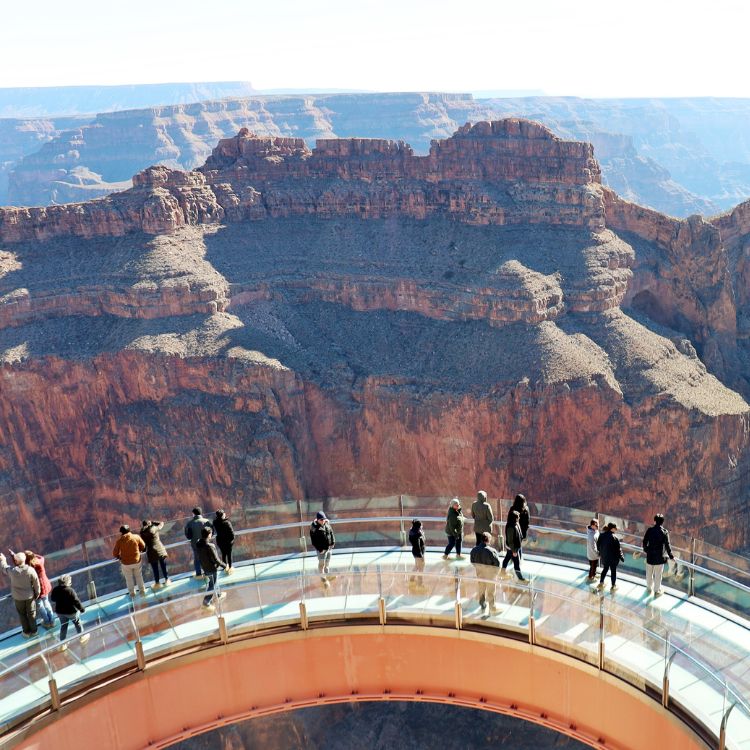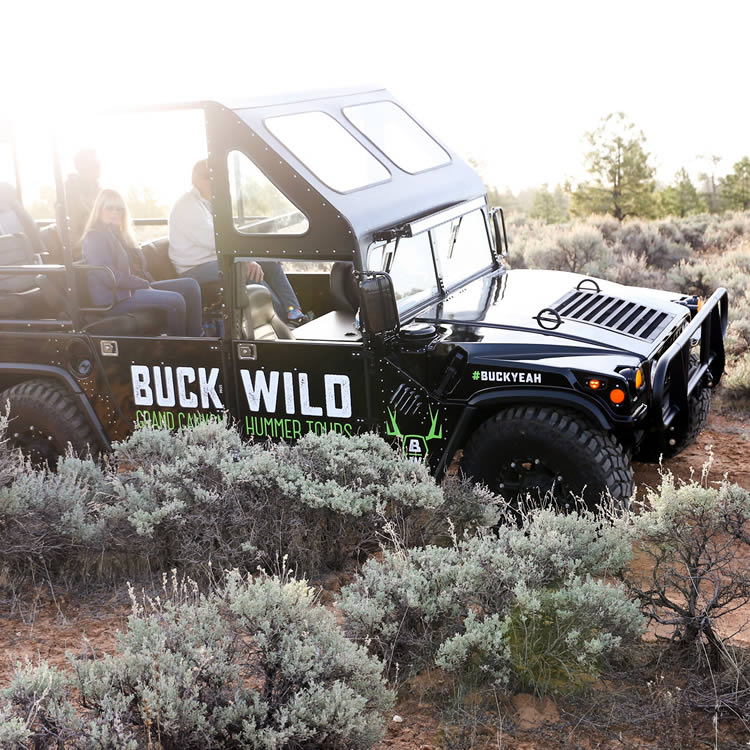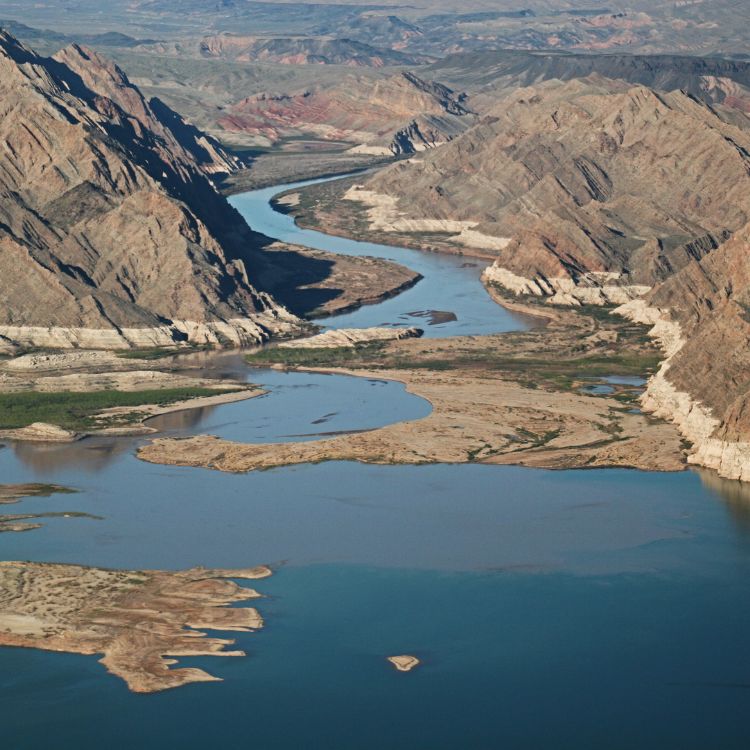6 Cool Creatures to Look for at the Grand Canyon
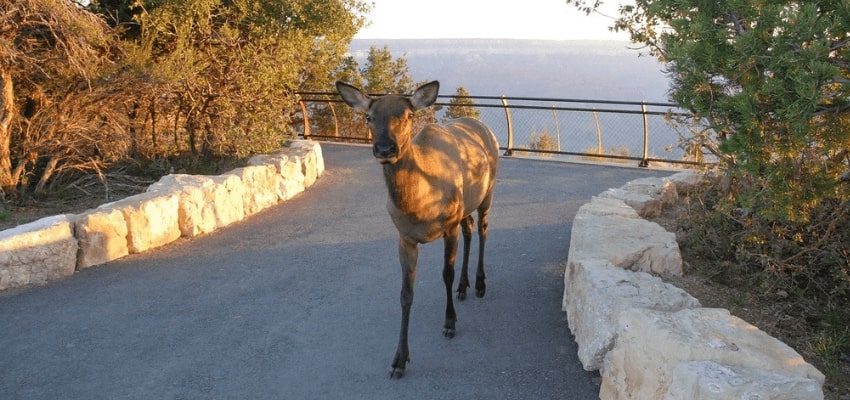
The Rim of the Grand Canyon is perpetually bustling with curious visitors – over 5 million annually – and life below the Rim is no different.
Stretching from the Kaibab Plateau’s subalpine conifer forests on the North Rim to the scrub of the Mojave Desert along the Colorado River, the Grand Canyon encompasses many major ecosystems. Over 1,500 species of plants, 355 birds, 89 mammals, 40 reptiles, 9 amphibians, and 17 fish call the Grand Canyon “home”, making it one of the most biologically diverse ecosystems in the Southwest.
Wildlife-spotting is one of the most popular activities at the Grand Canyon. Before you go, learn a little about some of the Grand Canyon’s coolest scaly, feathered, and furry inhabitants and keep your eyes peeled on your next visit:
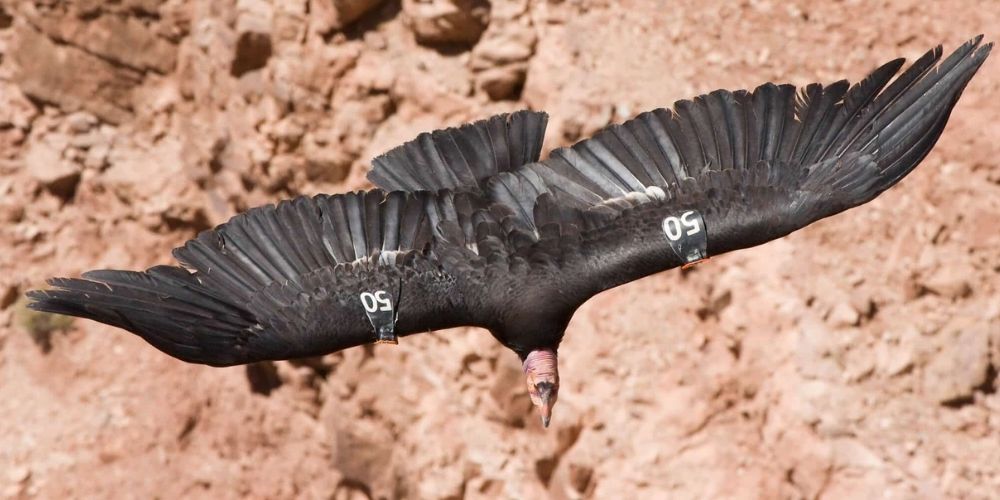
1. California Condors
With a wingspan of 9.5 feet, California Condors are the largest land bird in North America. California Condors used to live across North America, but egg collection, hunting, and lead and cyanide poisoning caused their population to dwindle to just 22 birds in the early 1980s. Now, thanks to the concentrated efforts of dedicated conservation partners, there are 78 Condors in Arizona and Utah, many of which soar over the Grand Canyon every day.
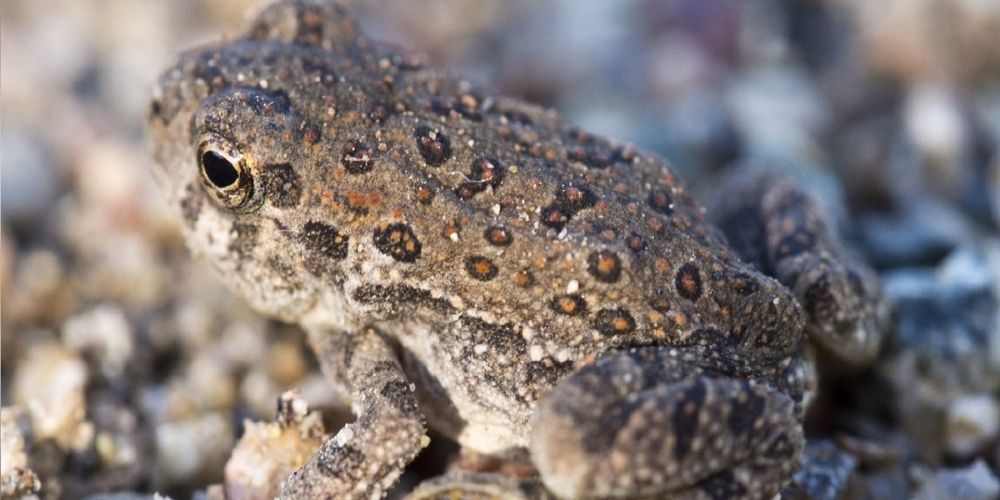
2. Red-Spotted Toads
The Red-Spotted Toad is one of the most common amphibians residing in the Grand Canyon. They can grow up to three inches in length, and are often found in rocky areas along the shore of the Colorado River. If you spot one, don’t pick it up – toads absorb chemicals through their skin, and the oils on your hands can harm them.
Venture inside the Canyon and explore the shore of the Colorado River on one of our Grand Canyon floor landing tours:
Grand Canyon Helicopter Floor Landing with Las Vegas Strip Upgrade
$579.00 – $654.00Grand Canyon Exclusive Floor Landing Helicopter Tour
$499.00 – $589.00Grand Canyon Exclusive Floor Landing Helicopter Sunset Tour
$649.00 – $669.00Grand Canyon Helicopter, Boat & Skywalk Tour
$864.00 – $884.00
3. Peregrine Falcons
Peregrine falcons are the fastest birds in the world, capable of diving at speeds of 200 miles per hour! “Peregrine” means “wanderer”, and these fast falcons are well known for roaming far and wide – despite their relatively small 3.5 foot wingspan, peregrine falcons undertake some of the longest migrations of all North American birds and can be found on every continent except Antarctica.
Peregrine falcons are no longer considered endangered species, and nearly 100 pairs of falcons make the Grand Canyon their home.
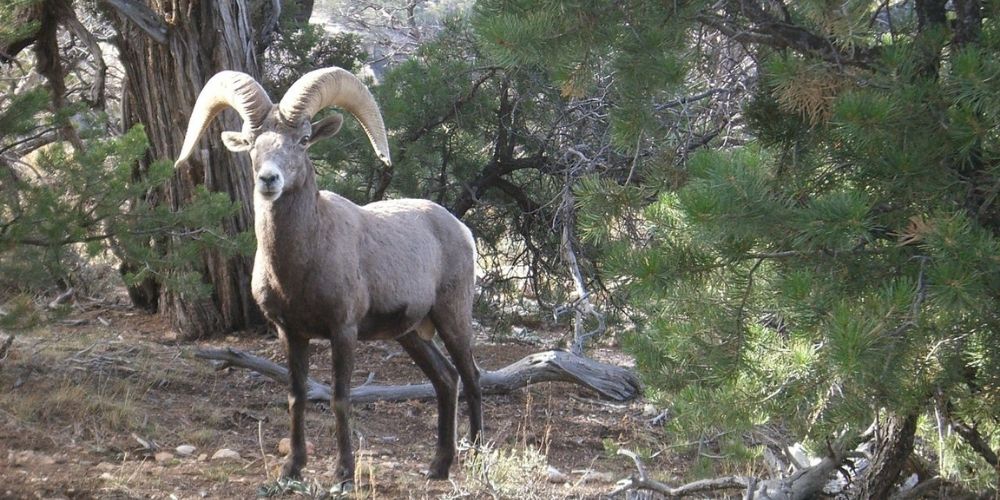
4. Bighorn Sheep
Bighorn sheep are the largest animal native to the Grand Canyon area, with male rams weighing up to 250 pounds! Bighorn sheep are commonly spotted perching on the Canyon’s steep terrain and cliffs, and usually roam in herds of 8-10. However, herds of up to 20 sheep have been spotted along the Colorado River. Keep a sharp eye open – their brown coats can make bighorn sheep difficult to spot.
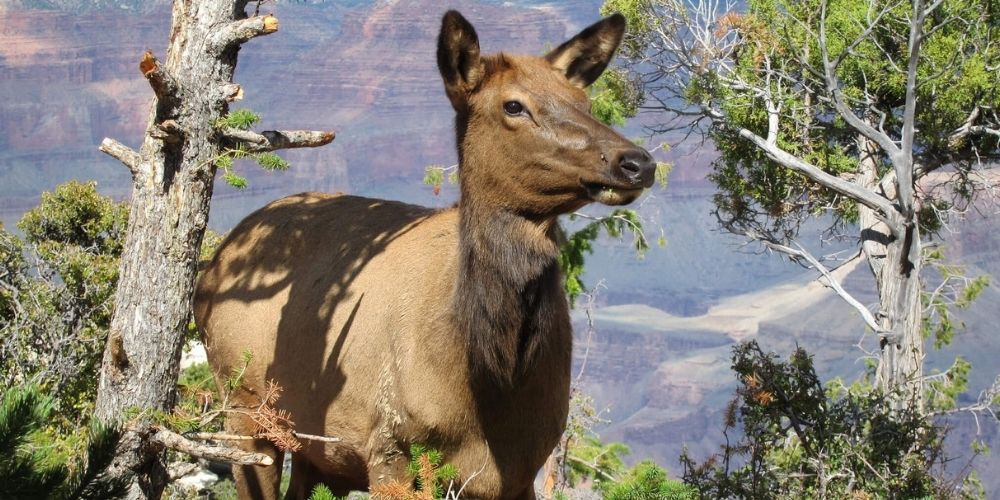
5. Elk
Elk are not natural inhabitants of the Grand Canyon region, and they are not particularly well adapted to dry climates. As a result, most of their water comes from human sources, including the puddles beneath water bottle refill stations located throughout the National Park. If you spot an elk, stay back at least 100 feet – Grand Canyon elk are not afraid of humans, but they will defend themselves if you get too close.
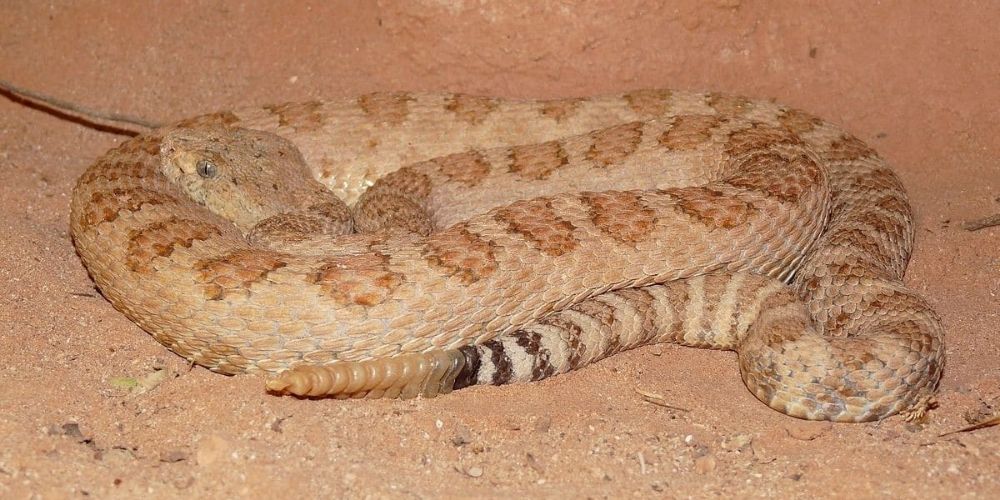
6. Rattlesnakes
The Grand Canyon is home to six unique species of poisonous rattlesnakes that can’t be found anywhere else in the world. Each species has a different color pattern and is native to a different region of the Grand Canyon.
Grand Canyon rattlesnakes are primarily found inside the Grand Canyon. If you spot one while you’re venturing below the Rim, be careful – rattlesnakes won’t attack unless provoked, but if you hear a rattle, move away and watch from a distance of at least 15 feet. Most bites occur when people try to pick up a rattlesnake.
Wildlife Dos and Don'ts
It’s exciting to spot Grand Canyon wildlife! Keep these dos and don’ts in mind for when you do:
- DO watch from distance. While some species are not dangerous to humans, others will defend themselves if they feel provoked. Consider taking a pair of binoculars if you want to observe the wildlife up close.
- DO keep your camera ready. You never know when you’ll see wildlife!
- DON’T touch the animals. Most bites and injuries occur when visitors try to pick up or interact with the wildlife. Stay back and stay safe.
- DON’T feed the animals. Feeding the wildlife can disrupt their natural diet and affect the Grand Canyon’s delicate ecosystem.
Go Wild!
The Grand Canyon is full of exciting adventures! Keep your camera ready and your eyes peeled while you explore the Grand Canyon – you never know when you’ll spot some seriously cool wildlife.

